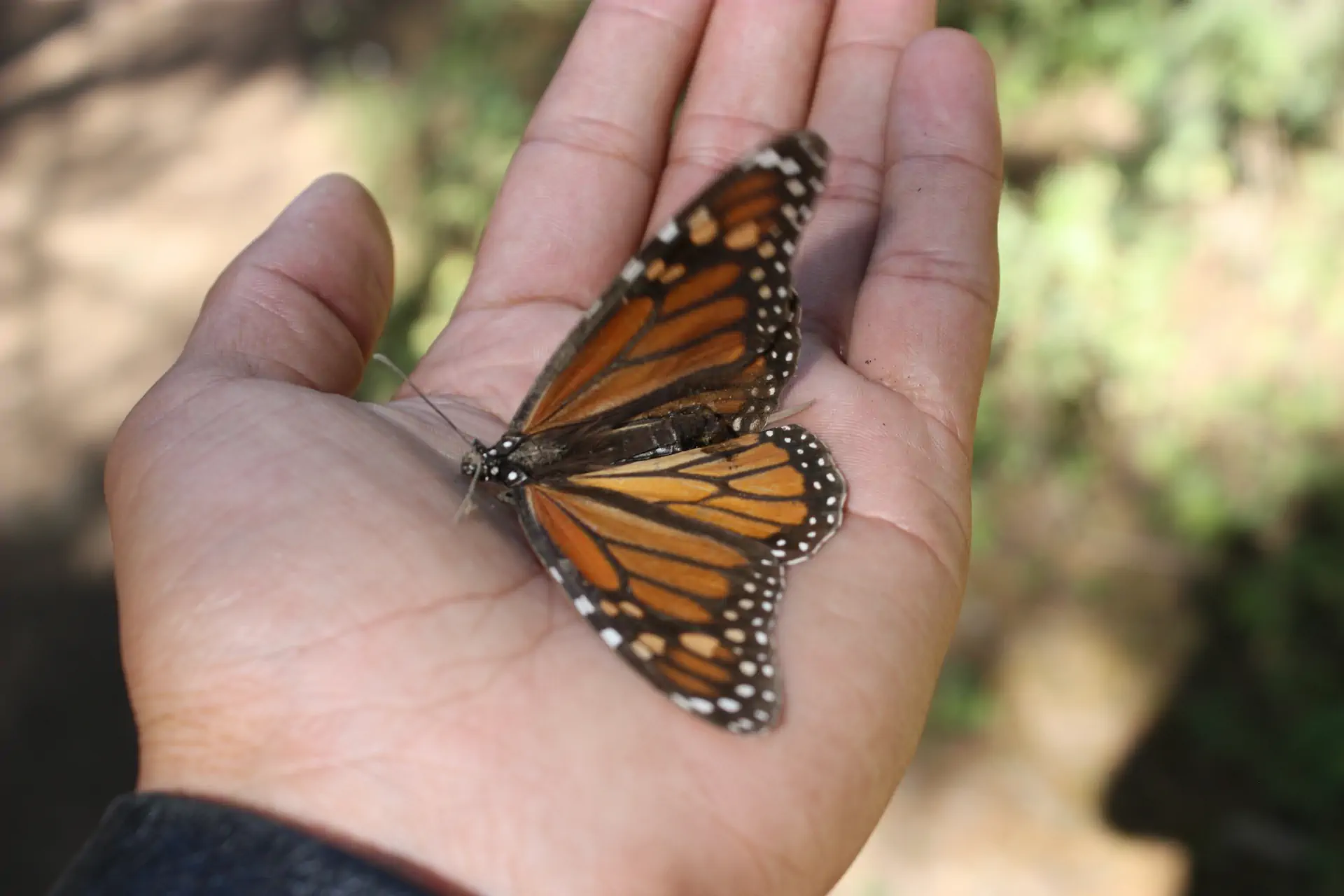It gets too cold in the United States for the Monarch butterflies, so every year around October hundreds of millions of them head south. They migrate up to 3,000 miles to hibernate in oyamel fir trees of the Mexican forests. In the middle of February, when temperatures rise, they begin mating and feeding off flower nectar to accumulate energy for the return flight. During March, they take off simultaneously from their temporary home in Mexico to begin a pilgrimage that will see them return from where they came from in the north. It’s a spectacular sight to see.

Visit Rancho Las Cascadas during these month and witness this wonderful phenomenon. When you make your reservation, let us know that you want to see this breathtaking natural event and we’ll take care of the details.
Fun Facts About Monarch Butterflies
Monarch butterflies use the very same trees each and every year when they migrate, which seems odd because they aren’t the same butterflies that were there last year.The Monarch butterflies go through prolonged stages of metamorphoses, starting with its larva or caterpillar, shedding or molting its skin an amazing five times before the pupa stageThe caterpillar is a voracious eater, capable of consuming an entire milkweed leaf in less than five minutes. They gain about 2700 times their original weight, and in the process, excrete an abundant quantity of “frass” (or waste).A black spot on an inside surface of its hind wing distinguishes the male Monarch butterflies from the females that have no such spot.The Monarch butterfly does not have lungs; breathing takes place through tiny vents in the thorax or abdomen called spiracles, and an organized arrangement of tubes called trachea, distribute the oxygen through the Monarch’s body systemThe Monarch butterfly can cumulatively lay about a maximum of 250 eggs per day at the rate of one egg at a time. The witnessed highest number of eggs laid by a monarch butterfly in captivity is 1179.They fly at speeds ranging between 12 to 25 miles an hour.
So it will come as no surprise to hear that Mexico’s Monarch Butterfly Biosphere Reserve is a UNESCO World Heritage Site.
Located just 100 km (62 miles) North West of Mexico City in the area of Michoacán, it means a visit to the reserve from the Rancho is a very doable ‘bucket list’ trip.
Every year up to 1 billion butterflies make their way from eastern Canada during the months of September and October to the forests of western central Mexico. It’s a journey of around 4000 km, or a 5-hour flight with the winds in your favour.
And that’s exactly one of the reasons they come – the good tail winds! That too with the delicious plant nectar (natures own tequila), low rainfall and the good sunshine. In fact many of the same reasons why we see our own guests migrating back to the Rancho again and again!
Their arrival is a phenomenon in itself, as it coincides with a very particular holiday in the Mexican calendar – The Day of the Dead. This is the festival where Mexican people remember their deceased loved ones, taking time to celebrate and commemorate them. The butterflies arrive around the time of The Day of the Dead, and bring with them a belief that every butterfly is the soul of someone deceased migrating back.
But, not only do they arrive at the same time each year, they arrive to the same place each year – the pine and oyamel forests in the mountains of Michoacán. Here they set up their winter homes on the tops of the trees in huge clusters forming a magnificent blanket of orange and black. These clusters completely cover the trees, creating an immense weight that often makes the branches bend and snap.
The butterflies cluster together in order to conserve heat and survive the cold winter temperatures in the mountains, and it is here that they will live for up to 5 months. But as the warm sun starts to come out more frequently during February and March the butterflies begin to become more animated and active: they drink lots of the Mexican plant nectar, find a prospective partner to start mating with and build their strength up ready for making the journey home.
This animated behaviour by the butterflies creates some incredible sights to be witnessed and the sound of their beating wings has been compared to the sound of light rain.
One of the most phenomenal things is that no one butterfly will ever make the entire journey from Canada to Mexico and back again. So as they gear up to go home in April, who knows where along this incredibly arduous path these colourful souls will lay to rest. One thing we do know however, is this is an example of nature at it’s finest and of the colour and magic that leads us all to Mexico.
Make your plans to see the butterflies before they leave. When you make your reservation at the Rancho Las Cascadas, let us know you’d like to see them and we’ll make all of the arrangements so you can see this spectacular site.


